Interview: Benjamin Lussier
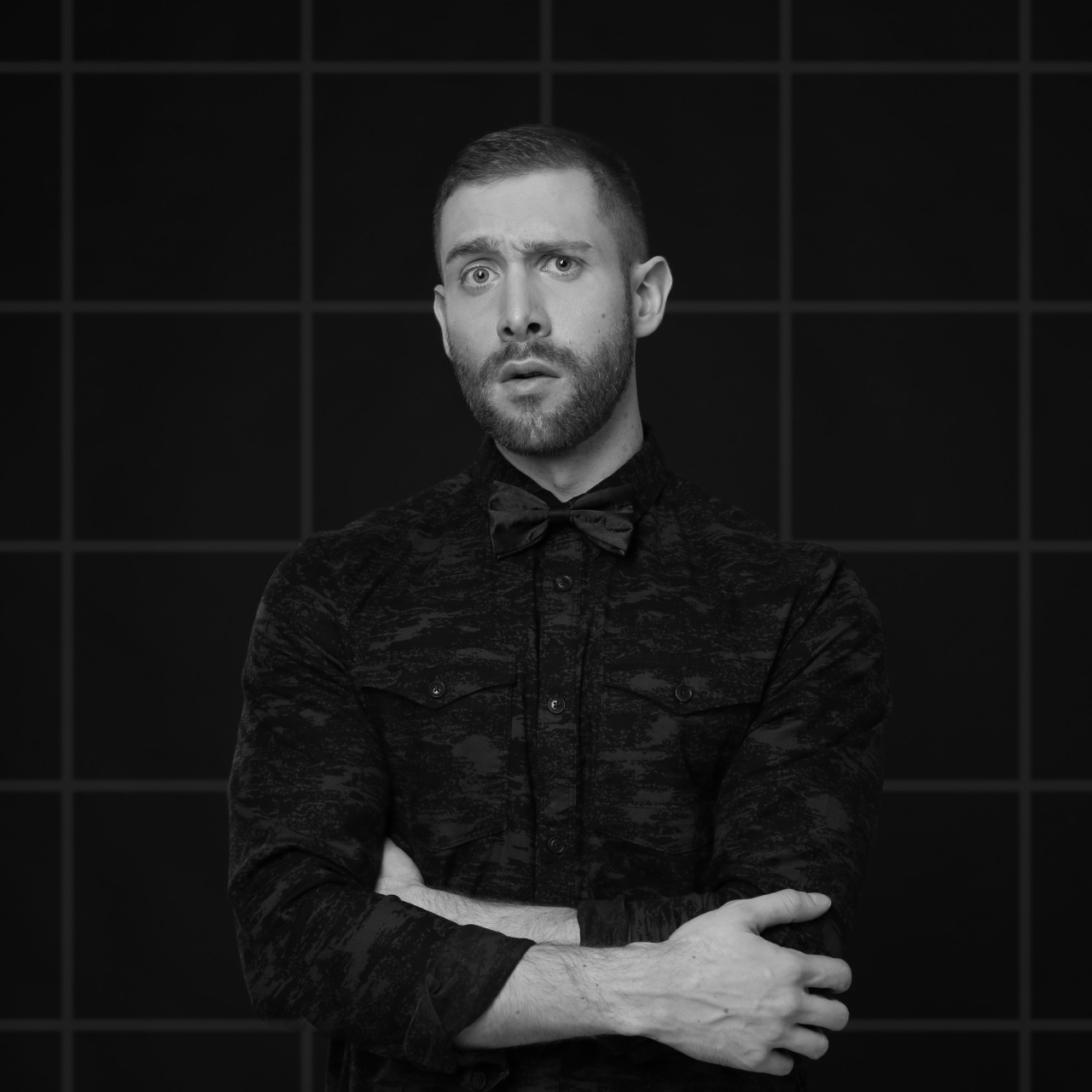
We are extremely excited to showcase the film Pool by Benjamin Lussier in our theatre over the Spring season. We had a chance to chat with him about his film and career.
In a nutshell what is the film about?
Pool to me is a film about self-awareness and the feelings of isolation it creates. I wanted to take this theme of alienation and push it to the extreme. That’s why Willem has a speech impediment. That’s why he speaks to the audience in a language very few people understand (Norwegian). That’s also why he’s rich and haughty. I think that’s the beauty of the short film format. You can get away with having a protagonist that’s more a concept than a realistic character.
Your work is very beautiful, cinematic and often dream like or surreal. Describe your aesthetic.
I’ve always been fascinated by the nature of reality. So much of it has to do with perception and subjectivity in my opinion… and for some people that’s unacceptable. It’s scary because it makes you question everything. That uncertainty actually brings me a lot of joy and fulfilment. To me, that mystery is what makes life worth living and I guess on a subconscious level I’ve always wanted to share that with others. That’s why most of my work presents a version of reality that’s a bit skewed. Something’s always a little bit off, or way off in some cases. I also have a penchant for night looks and vivid colors. It allows you to create that disconnection from reality without stepping out of line too much.
Tell us about some of your other works in music video, film and photography.
Pool is my third short film. I directed my first short in 2008 (The Diary). Another film about a foreigner feeling isolated but this one was a lot lighter and cuter. It was part live action, part animation. That first short film led me to my first music video gig. It was a video for Mara Tremblay (Le printemps des amants). It won music video of the year at l’Adisq that year and a Juno nomination for another video that same year, so things took off pretty quickly. I directed music videos for canadian artists like Kreesha Turner, Misstress Barbara, Alex Nevsky, Elephant Stone and many others . I loved it, still do, but the budgets keep shrinking. They’re hard to finance. I direct commercials now. You don’t have the same creative freedom as you do in music videos, but you meet a lot of very talented people. And working with other talented people taught me to put my ego aside, observe and learn.
Photography however, is something I do for myself. All you need is a camera and a subject. I love the simplicity and the intimacy of it all. I’m working on a photo book. It’s a long term project. I go back to it whenever I have a few days off.
What are your biggest influences and inspirations for creating?
I look at a lot of photographs. Sometimes a story or a concept will pop into my head just by looking at a photo. Pool was actually inspired by a photo I saw. It was the photo of a suave young man, wearing a suit, sitting in the back of a car that was parked right next to a sleazy fast food joint with bright fluorescent lights. He looked so proud, yet so lonely. There are several elements of that photo in the film.
How and when did you get into making films?
I knew I wanted to work in film by the age of three. I didn’t know in what capacity then but I wanted to tell stories. Before I had my first camera I used to make animation films on my computer. They were crude mind you but I was driven. I found this community on-line of equally eager and creative kids. I had a blast. Then eventually I got an 8mm camera. It didn’t take long for me to feel constricted by the reality of making films in my backyard. I missed what I could do in animation. So I learned how to do visual effects on the computer as a teenager. I got my first job at 17 as a visual effects artist. I worked in visual effects for eight years… I always knew I wanted to direct films and get off the computer at some point, but I knew visual effects could be my foot in the door. And it worked. The producers I met as a visual effects artist gave me my first job as a music video director and it took off from there.
What other projects are you currently working on?
I’m currently writing my first feature-length screenplay. It’s the story of two siblings trying to reconnect as a family. It’s set in the gay club scene of New York city in the early 90s. I also have a photo project that will hopefully be finished next year. Also a queer project. The two projects are kind of linked in a way. The photo project creates opportunities for me to meet people that inspire me for the screenplay. I love queer culture. It’s irreverent and doesn’t take itself too seriously. Being gay has been a great blessing in my life and right now I feel the urge to honour that as much as I can in my work.
Tell us what you love about Think Outside The Box and Never Apart and why you chose to work with both of these arts organizations?
Never Apart and Think Outside are young organizations but they seem to have a very clear vision. I love how friendly it is to queer art. I’d love to get more involved. There seems to be a great feeling of community and the exhibitions are so well curated. I’m really honoured and excited that Pool got selected… I’m serious about getting more involved. Call me guys!
Why do you feel Montreal is so enriched with so many talented artists?
I think it’s that blend of franco/anglo cultures. Quebec is such an oddity. From a cultural standpoint it’s always sitting between two chairs. I guess that’s what is keeping it on its toes.
Who is your dream artist to work with?
Benoît Debie, the cinematographer. I love his work. The colours. The camera work. It’s so bold and unafraid. It looks utterly surreal, yet the light always seems like it’s coming from a practical, logical source. I would absolutely love to work with him one day.
Il nous fait grand plaisir de présenter le film Pool par Benjamin Lussier dans notre salle de projection ce printemps. Nous avons eu la chance de parler avec lui de son film et de sa carrière.
En bref, de quoi parle le film?
Pool est pour moi un film sur la conscience de soi et les sentiments d’isolation qui s’en dégage. Je voulais prendre le thème du détachement et le pousser à l’extrême. Voilà pourquoi Willem a un défaut d’élocution. Voilà pourquoi il parle au public en norvégien, un langage que très peu de gens comprennent. Voilà aussi pourquoi il est riche et hautain. Je pense que là est la beauté du format court-métrage. On peut s’en tirer avec un protagoniste plus rapproché d’un concept plutôt que d’un personnage réaliste.
Votre travail est vraiment beau, cinématographique et très souvent onirique et surréaliste. Décrivez-nous votre esthétique.
J’ai toujours été fasciné par la nature de la réalité. À mon avis, ça a tant à voir avec la perception et la subjectivité… et certains trouvent cela inacceptable. Ça effraie parce que ça force à tout remettre en question. En fait, cette incertitude m’apporte beaucoup de joie et d’accomplissement. Selon moi, ce mystère fait que le vie vaut la peine d’être vécue et je crois que inconsciemment, j’ai toujours voulu partager cette notion avec d’autres personnes. Voilà pourquoi la majorité de mes oeuvres présente une version de la réalité qui est un peu faussée. Il y a toujours un petit quelque chose qui cloche, et qui cloche parfois même beaucoup. J’ai aussi penchant pour les looks nocturnes et les couleurs voyantes. Ça permet de créer ce décalage à la réalité sans trop dépasser les limites.
Parlez-nous de quelques-unes de vos autres créations, dans les domaines du vidéoclip, du cinéma et de la photographie.
Pool est mon troisième court-métrage. J’ai réalisé mon premier court-métrage en 2008, intitulé The Diary. Un autre film sur un étranger se sentant isolé, mais celui-ci était beaucoup plus léger et mignon. Il était composé d’une part d’images filmées et d’une part d’animation. Ce premier film m’a mené à mon premier contrat pour un vidéoclip . C’était un clip pour Le printemps des Amants de Mara Tremblay. Il a gagné le Vidéo de l’Année à l’Adisq et j’ai récolté une nomination aux Junos pour un autre clip la même année, alors les choses ont évolué assez rapidement. J’ai réalisé des vidéoclips pour des artistes canadiens tels Kreesha Turner, Misstress Barbara, Alex Nevsky, Elephant Stone pour ne nommer que ceux-là. J’aimais beaucoup cela, j’aime encore, mais les budgets ne cessent de rétrécir. Les vidéoclips sont difficiles à financer. À présent, je réalise des publicités; on n’y trouve pas la même liberté créative qu’on a avec des vidéoclips, mais on y rencontre beaucoup de gens de talent. Et travailler avec d’autres gens doués m’a appris à mettre mon égo de côté, à observer et apprendre.
La photographie, ça, c’est quelque chose que je fais pour moi. Tout ce dont j’ai besoin c’est d’un appareil photo et d’un sujet. J’aime cette simplicité et cette intimité. Je travaillais sur un livre de photographie; c’est un projet à long terme. J’y reviens toujours dès que j’ai quelques journées de congé.
Qu’est-ce qui vous influence et inspire le plus à créer?
Je regarde beaucoup de photographies. Parfois, une histoire ou un concept me vient subitement rien qu’en regardant une photo. Pool a en fait été inspiré par une photo que j’ai vue, celle d’un jeune homme suave, en complet, assis à l’arrière d’une voiture garée juste à côté d’un restaurant de malbouffe miteux avec un éclairage au néon. Il avait l’air si fier, mais si seul. Beaucoup d’éléments de cette photographie se retrouvent dans le film.
Comment et à quel moment vous êtes-vous mis à la réalisation de films?
Je savais que je voulais travailler en cinéma dès l’âge de trois ans. Je ne savais pas dans quel rôle, mais je voulais raconter des histoires. Avant d’avoir ma première caméra, j’avais l’habitude de créer des films d‘animation à l’ordinateur. C’est vrai qu’ils étaient rudimentaires, mais j’étais motivé. J’ai découvert en ligne cette communauté d’enfants autant enthousiastes et créatifs. Je me suis vraiment amusé. Par la suite, je me suis procuré une caméra 8mm, mais ça m’a pris très peu de temps avant de me sentir limité par le fait de réaliser des films dans mon arrière-cour. Ce que je pouvais faire en animation me manquait. Adolescent, j’ai donc appris comment faire des effets visuels à l’ordinateur. J’ai eu mon premier emploi d’artiste d’effets visuels à 17 ans. J’ai travaillé en effets visuels pendant huit ans… J’ai toujours su que je voulais éventuellement réaliser des films et ne plus travailler à l’ordinateur, mais je savais aussi que les effets visuels pourraient être ma porte d’entrée. Et ça a fonctionné! Les producteurs que j’avais rencontrés en tant qu’artiste d’effets visuels m’ont donné mon premier contrat de réalisateur de vidéoclips et les choses ont démarré de là.
Sur quels autres projets travaillez-vous en ce moment?
Je travaille à l’écriture de mon premier scénario long-métrage. Il raconte l’histoire de deux enfants de mêmes parents qui essaient de rebâtir leurs liens. Ça se passe dans le milieu des clubs gais de New York au début des années 90. J’ai aussi un projet de photographie qui, je l’espère, sera terminé l’an prochain. Aussi un projet queer. Les deux projets sont liés d’une certaine façon. Le projet photo me permet de rencontrer des gens qui m’inspirent pour le scénario. J’adore la culture queer. C’est irrévérencieux et ne se prend pas trop au sérieux. Être gay a été une bénédiction dans ma vie et je ressens à présent le besoin d’honorer cela dans mon travail autant que je peux.
Dites-nous ce que vous aimé de Think Outside The Box et Never Apart et pourquoi vous avez choisi de collaborer avec ces deux organismes artistiques?
Never Apart et Think Outside sont des organismes tout nouveaux, mais ils semblent avoir une vision très définie. J’aime à quel point ils sont ouverts à l’art queer. J’aimerais m’impliquer encore plus. On y ressent un fantastique sentiment de communauté et les expositions sont si bien organisées. Je suis vraiment honoré et excité par le fait que Pool ait été sélectionné… Je suis sérieux à propos de vouloir m’impliquer davantage. Les gars, appelez-moi!
Selon vous, pourquoi Montréal se trouve-t-elle enrichie par tant d’artistes de talent?
Je pense que ça vient du mélange des cultures francophones et anglophones. Le Québec est franchement un curieux endroit. D’un point de vue culturel, il est toujours entre deux chaises. Je présume que c’est ce qui le garde alerte.
Avec quel artiste rêvez-vous de collaborer?
Le cinéaste Benoît Debie. J’adore son travail. Les couleurs, La cinématographie. C’est audacieux et téméraire. Ça a l’air complètement surréaliste, mais la lumière semble toujours venir d’une source pratique et logique. J’adorerais travailler avec lui un jour.

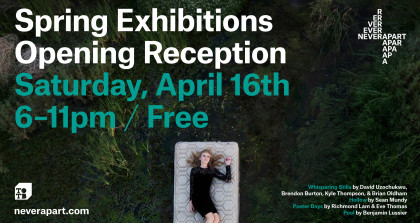
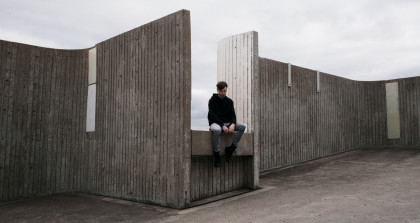
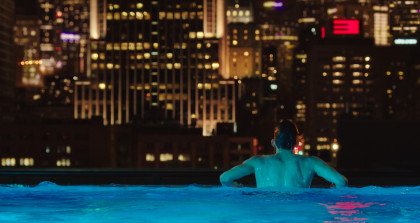
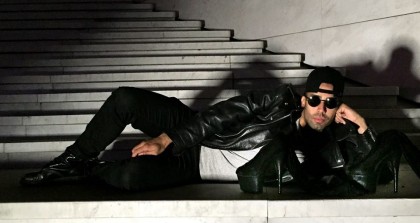
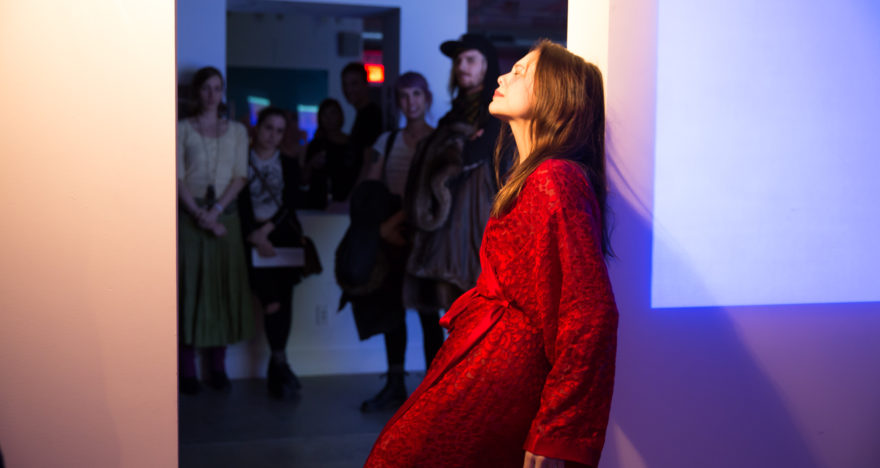
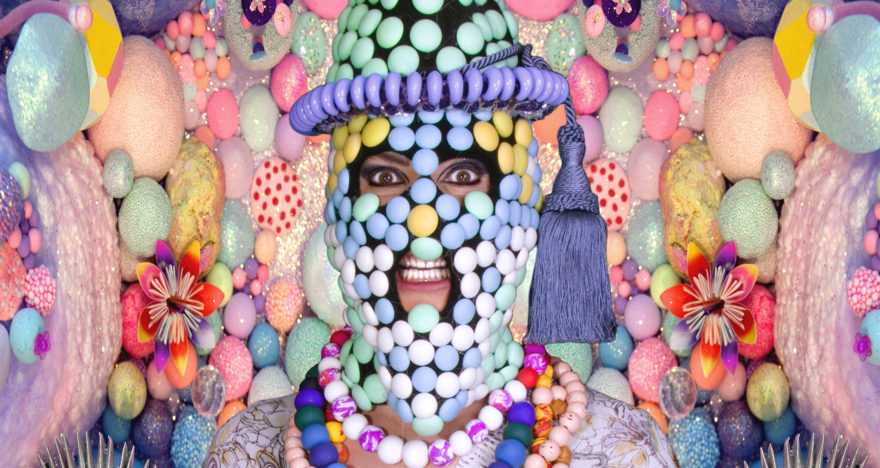
View Comments
No Comments (Hide)